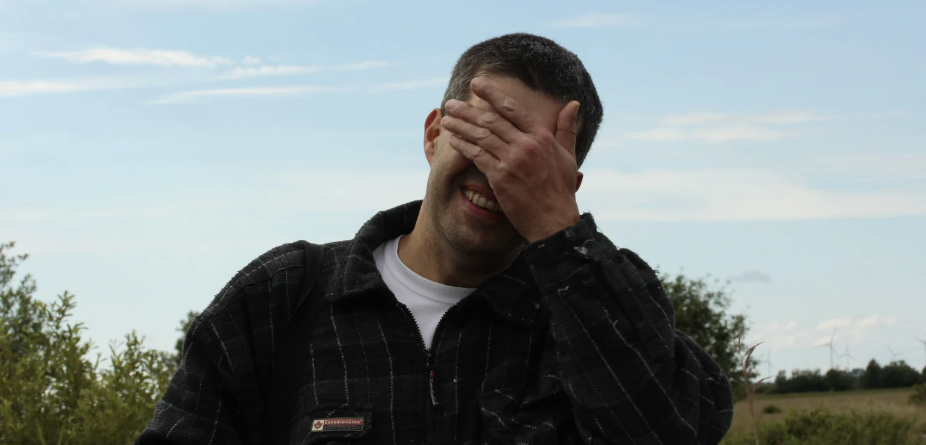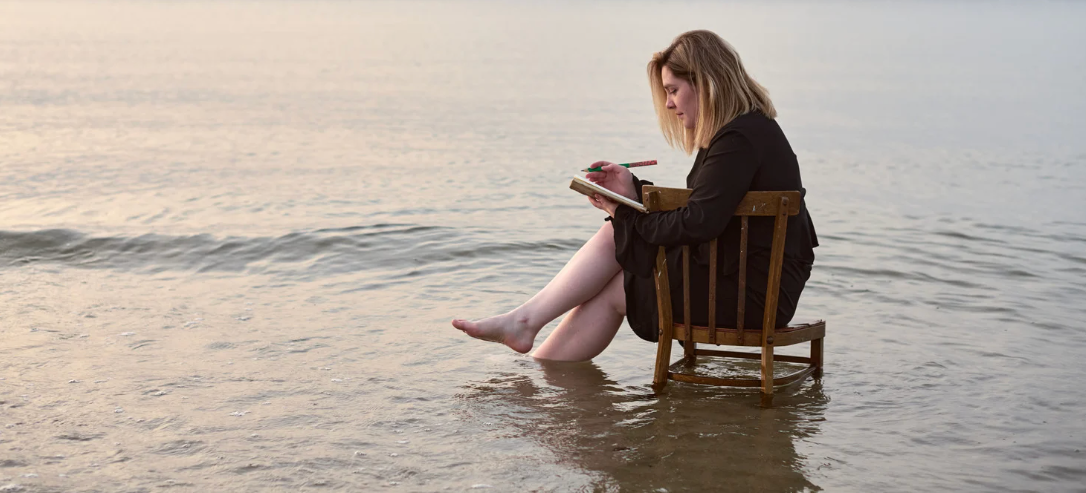How abortion ban exceptions muddy ethical care for pregnant patients
"How imminent must death be?"

Obstetricians are facing impossible dilemmas with abortion care in some states.
When the Dobbs decision overturned Roe v. Wade in the summer of 2022, experts warned that there would be medical consequences. Politicians have made abortion a black-and-white issue when it's a vast ocean of gray, and doctors are now stuck in dilemma after dilemma in states like Tennessee, which enacted some of the strictest abortion laws in the nation in the wake of Dobbs.
In Tennessee, it is now a Class C felony to perform an abortion. Exceptions are made for rape and incest, ectopic pregnancy, molar pregnancy, and if "the abortion was necessary to prevent the death of the pregnant woman or to prevent serious risk of substantial and irreversible impairment of a major bodily function of the pregnant woman."
But as OB-GYN Sarah Osmundson explained on Radio Atlantic, that last exception is "very gray." Working as a maternal-fetal specialist at Vanderbilt University Medical Center, Osmundson serves on the abortion committee that decides whether a doctor has the green light to perform an abortion to save a mother's life or bodily function. In an interview with Hanna Rosin, Dr. Osmundson shared how making those calls can feel like an impossible task as providers walk the line between ethical care and the threat of legal action.
Osmundson explained that it's unclear what the exceptions to the law even mean because there's no predictable line for when a patient will cross over into imminent death or permanent injury. "It is a continuum of risk," she said. "Where is the cut point that we have to decide some aspect of risk is too high?"
Some cases are cut-and-dried, she said, but others present a conundrum for those who are tasked with assessing whether the risk to a mother's life or health is high enough to warrant an abortion. There are no clear thresholds, especially since risk assessment isn't an exact science.
She offered an example of a patient who has diabetes combined with an autoimmune condition, but they're both currently well managed, on top of kidney disease.
"You know, these are the kind of cases where we’re really trying to guess at: What is their risk of death or serious morbidity?" she said. "And even when I see these patients in the office, like, I can’t sit down with them and say, Your risk is X percent. I don’t have data to drive that individual case. Maybe their risk of serious problems in pregnancy is like 5 percent."
Osmundson pointed out that some patients choose not to screen for chromosomal abnormalities with an amniocentesis because there's a 0.1% risk of complication and they decide it's not worth the risk. "So we don’t do certain things because of very low risk. How am I to say that a risk of 5 percent is too low of a risk?" she asked.
Dr. Lisa Harris, an OB-GYN and professor at the University of Michigan, posed a similar questions to NPR shortly after the Dobbs decision was announced.
"How imminent must death be?" Harris asked. "There are many conditions that people have that when they become pregnant, they're OK in early pregnancy, but as pregnancy progresses, it puts enormous stress on all of the body's organ systems – the heart, the lungs, the kidneys. So they may be fine right now – there's no life-threatening emergency now – but three or four or five months from now, they may have life-threatening consequences."
Osmundson gave a specific example along those lines that posed a problem for some doctors on her committee. A woman was 14 weeks pregnant with a fetus that had no skull, which meant it had no chance of survival but an increased risk of excessive amniotic fluid, which could threaten the mother's life. Osmundson thought the case warranted an abortion, but others on the committee wouldn't commit, with one saying they weren't "brave enough."
The doctors were concerned about the way the decision would be scrutinized and the potential legal consequences if someone brought the case to court. Dr. Louise King, an OB-GYN at Boston's Brigham and Women's Hospital, had warned of this scenario when Roe v. Wade was overturned.
"Laws will exist that ask [physicians] to deprioritize the person in front of them and to act in a way that is medically harmful," King told NPR. "And the penalty for not doing so will be loss of license, money loss, potentially even criminal sanctions."
The reality Osmundson described in the Radio Atlantic interview demonstrates how prescient that warning truly was.
"I feel like I’m making a decision thinking about: How would our attorney general interpret this? How would the optics appear? And it makes me feel really uncomfortable, as a physician, that I’m considering care for the optics, rather than for what is right and best for the patient," she said.
Legal abortion ban exceptions like "to prevent the death of the pregnant woman or to prevent serious risk of substantial and irreversible impairment of a major bodily function of the pregnant woman" may sound straightforward to the average person, in the reality of medicine, it's not. Doctors aren't magicians or oracles, they don't have a crystal ball that tells them if a patient is going to live or die or be irreparably harmed—they make their best guesses based on their deep well of knowledge and experience, which lawyers and politicians deciding on legal boundaries don't have. Abortion restrictions and exceptions like Tennessee's force doctors to think as lawyers and lawyers to think as doctors when they don't have the training for it, all while people's lives hang in the balance.
The ambiguity in risk thresholds also makes these legal questions impossible to navigate. As Osmundson pointed out, a 5% risk is actually quite high, especially when it's your own life on the line. That's a hard enough choice for a person to make for themselves, much less a choice we should expect a doctor to make for someone based on political decisions and legal judgments made by people with no experience in the intricacies of medicine.
The challenges are even causing some doctors to leave states where they feel they can't care for patients properly. Kylie Cooper, MD was a maternal-fetal specialist who moved from Idaho to Minnesota in the wake of the Dobbs decision.
“My husband and I would talk about this every day. It was consuming us,” she told the AAMC. “What if I lost my license? What would happen to our kids if I went to jail? What about my guilt if I didn’t help a sick patient to my fullest ability? It was a nightmare. I didn’t feel I could remain a health care provider in a place where I couldn’t help a patient sitting right in front of me. It was unbearable.”
And for many, it doesn't seem to be a matter of making the law clearer. There are simply too many factors on an individual patient basis for more clarity in the law to even be possible, much less helpful, while also preserving a doctor's ethical standards of care.
So what's the answer?
The simplest answer is medical privacy—the protection that was provided by Roe. v. Wade—which was argued for and passed by the majority of Republican-nominated Supreme Court Justices, by the way—for doctors and patients together to decide on healthcare decisions without government interference. We were warned by doctors of what would happen when abortion laws were left fully up to each state, and now we're seeing those consequences play out in state after state.
After going through various challenging scenarios, Osmundson summed up the crux of the issue with two questions that every person ought to consider: "Do you want your cancer doctor to be considering the opinion of an attorney general when they’re making recommendations about your cancer care? Why would you want those kind of external things involved in your care during pregnancy?"
Listen to Dr. Osmundson's enlightening Radio Atlantic interview here.
- Pete Buttigieg gave the best possible answer to Fox News' 'late-term abortion' questions ›
- A woman who grew up in foster care explains why the 'adoption not abortion' argument doesn't fly. ›
- Chrissy Teigen just learned her 2020 miscarriage was an abortion. She's not alone. ›
- Arizona's 1864 near-total abortion ban set to take effect - Upworthy ›




 Woman in denim jacket covers face with sleeve, standing outdoors with blurred background.
Woman in denim jacket covers face with sleeve, standing outdoors with blurred background. Woman with outstretched arms in a sunlit field, enjoying the outdoors.
Woman with outstretched arms in a sunlit field, enjoying the outdoors. Lush forest with vibrant green and orange foliage in soft, misty sunlight.
Lush forest with vibrant green and orange foliage in soft, misty sunlight. Friends laughing and drinking coffee at a cozy cafe table.
Friends laughing and drinking coffee at a cozy cafe table. Woman with curly hair in sunlight, eyes closed, wearing a purple top.
Woman with curly hair in sunlight, eyes closed, wearing a purple top. Man smiling with hand over face, standing outdoors against a blue sky background.
Man smiling with hand over face, standing outdoors against a blue sky background. Hand painting a still life on canvas with blue and orange tones.
Hand painting a still life on canvas with blue and orange tones. Woman sitting on a chair in the water, writing in a notebook at sunset.
Woman sitting on a chair in the water, writing in a notebook at sunset.


 Happy Girl GIF by RetMod
Happy Girl GIF by RetMod  Woman enjoying some self care time.
Woman enjoying some self care time.
 Women walking down a street.Image via Canva Photos.
Women walking down a street.Image via Canva Photos.  Woman aware of her surroundings in a parking garage. Image via Canva Photos.
Woman aware of her surroundings in a parking garage. Image via Canva Photos.
 "You're hilariously brilliant at everything you hate."
"You're hilariously brilliant at everything you hate."  "Bridget is authentically herself…and triumphs in her own way."
"Bridget is authentically herself…and triumphs in her own way."  "They're written in some curious language that I can't really understand."
"They're written in some curious language that I can't really understand."